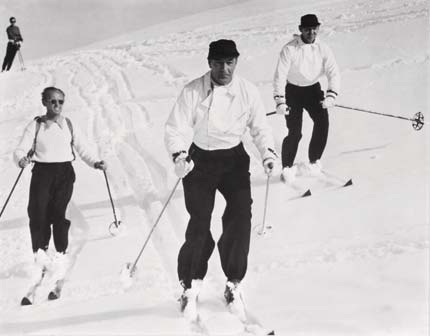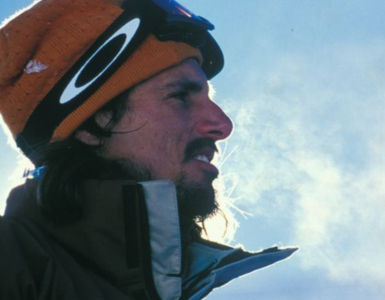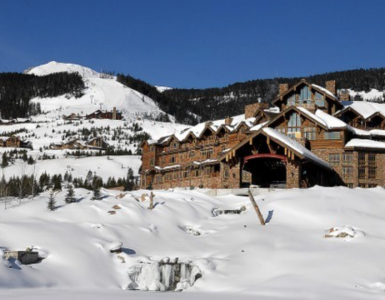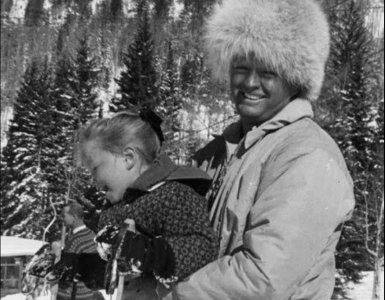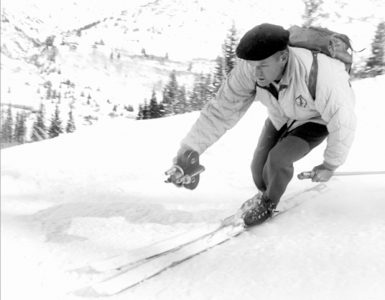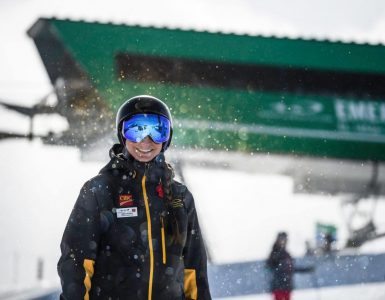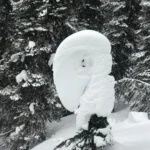By Warren Miller
 Being lucky is sometimes a lot better than being skillful. I have been very lucky for years because years ago I decided to hang my skis on a mountain in Montana and move from the middle of the Colorado Rockies. Who would have thought that the Colorado and California snow report in the middle of January would be, ‘No new snow on five to seven-inch base’. It has been a lot of years since I sat and looked at a ski hill with no snow on it and a restaurant at the base full of disgruntled people who had traveled a long way to carve turns on Averell Harriman’s pride and joy where the first chairlift in the world was built, Dollar Mountain at Sun Valley, Idaho.
Being lucky is sometimes a lot better than being skillful. I have been very lucky for years because years ago I decided to hang my skis on a mountain in Montana and move from the middle of the Colorado Rockies. Who would have thought that the Colorado and California snow report in the middle of January would be, ‘No new snow on five to seven-inch base’. It has been a lot of years since I sat and looked at a ski hill with no snow on it and a restaurant at the base full of disgruntled people who had traveled a long way to carve turns on Averell Harriman’s pride and joy where the first chairlift in the world was built, Dollar Mountain at Sun Valley, Idaho.
Two weeks before this dismal afternoon of staring at sage brush that was eighteen inches high covered here and there with an inch or two of snow, I had seen and filmed for the first time, Walt Stopa’s latest deal at Wilmot, Wisconsin, called artificial snow. Today they call it Man-Made Snow and it is the savior of many skier days that occur across the country for anyone who has the money to install the machinery.
I tried to explain to Sigi Engl, who was then the ski school director, how the process of combining high pressure air and high pressure water could possibly make something as complicated as a snowflake with no two of them ever the same.
Sigi was a ski instructor that was there when Howard Head showed up the first time with his metal skis. Sigi was reported to have said, “If man was meant to use skis made out of aluminum God would have grown aluminum trees.”
As we stared at the chairlifts swinging gently in the wind but not moving up the hill that was covered with sagebrush, Sigi said, “Those artificial snow machines are probably pretty good back east where they don’t get much snow but we don’t need them out here in the west were we get a lot of it.” Yeah, sure didn’t look like it that day.
Today any ski resort without it is playing poker with the devil. Whoever the devil is? Maybe one of you readers can find the answer for me. The other night a friend said, “These bad winters with no snow follow some sort of a seven year cycle.” I asked him to explain what caused the cycle of seven years and he said, “That’s what my Grandpa told me.” Unfortunately the source of the information is buried with his Grandpa somewhere in Vermont where he had died.
For me, the fact that the weather cycle follows lunar (moon) cycle rather than a solar cycle fits better in my hard drive. There are thirteen months in an annual lunar cycle. If you pick any given month for the worst days of winter, in his grandpa’s theory, the same days will come up one month later every year. I think this last year it fell in September when they got a lot of snow at Crystal Mountain in Washington and at Mammoth during the same storm and almost none since.
Come to think of it, I am a grandpa almost like that guy buried in Vermont except I am not buried in Vermont or anywhere else for that matter, yet. I do wonder sometimes where all the knowledge you have stored up in a lifetime of learning goes with you when you get buried eventually?
Wouldn’t it be great if someone could attach a couple of wires to you wherever your hard drive is located and do a wire transfer of all of the knowledge you have in some sort of a time warped moment? I am reasonably sure that if you could get a couple of old guys wired up this way, there would be a lot of unanticipated consequences from two of the two banks of knowledge of the two old guys whose grandchildren barely tolerate them if at all, unless they bring candy or presents when they visit.
Just as there are unexpected consequences when grandpa visits, there were the same problems of the unknown with artificial snow making machines. A winter or two after Walt Stopa’s breakthroughs on his 186 vertical foothill, someone leased Soldier’s Field in Chicago and filled the bleachers up with his wonderful invention, as well as, several rope tows and a genuine Austrian Ski School. By the time they got the bleachers filled up with snow every water pipe in the stadium was frozen solid. Within two days the freshly fallen artificial snow had turned an ugly gray from all of the coal fired furnaces within a three mile radius. The film I captured was reminiscent of some I took on the side of an erupting volcano in New Zealand years later. By the time I showed the Soldier’s Field ski resort to my audiences the following year, the developer of the resort had filed for bankruptcy. The ski school operator was last seen at O’Hare field boarding a discount ski club charter flight for Bavaria, and the only survivor of this ski resort in the bleachers on man-made snow was the guy who ran the toboggan slide down between the goal posts and out into the end zone.
Maybe Sigi was right when he said, “that they only needed these snow machines back east,” and Chicago just wasn’t far enough back east to have one that worked in Soldier’s Field.


